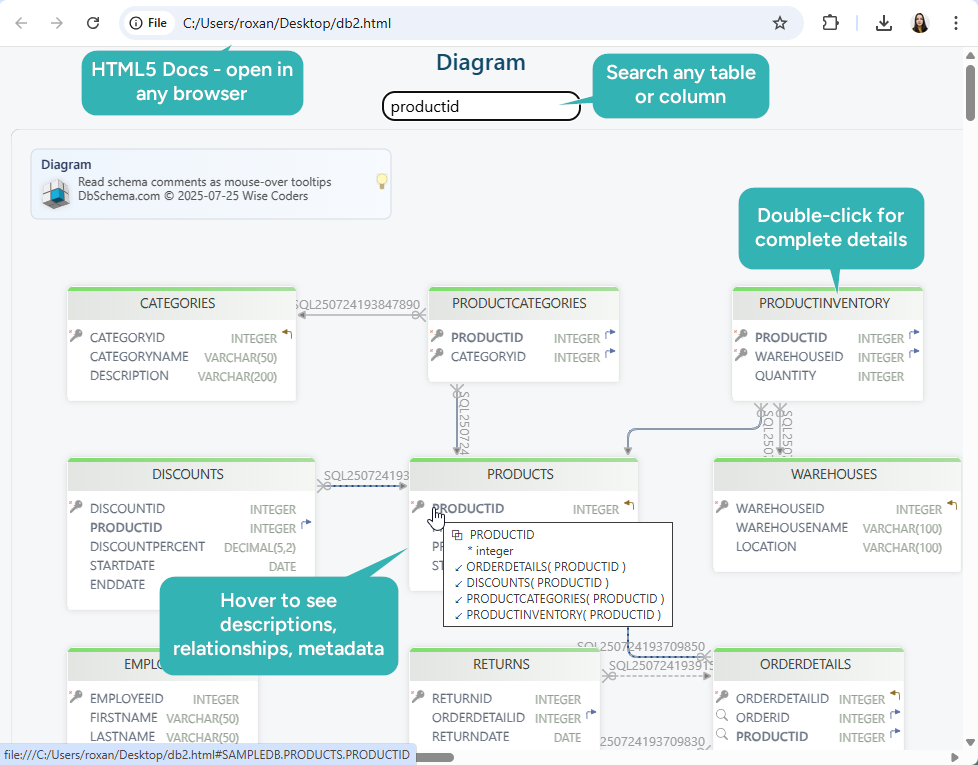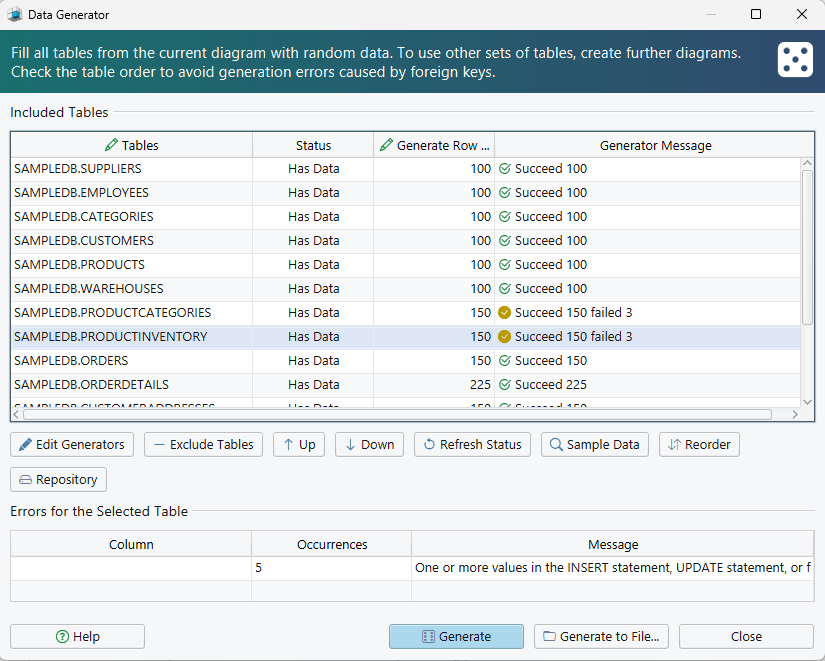
Visual Database Management & Design Tool for IBM Db2
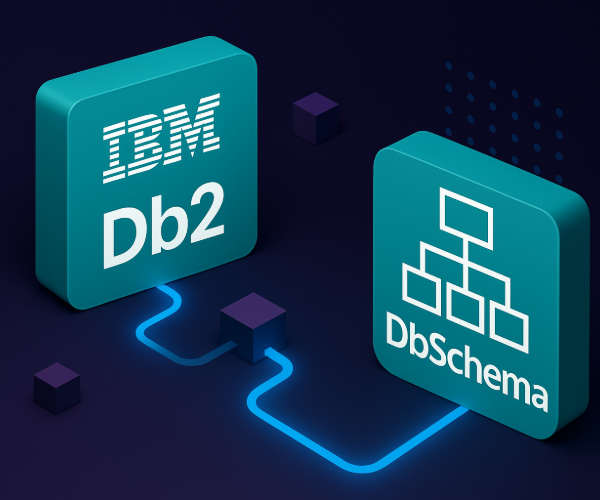
Are you working with IBM Db2 and want a better way to organize your database?
DbSchema offers a visual approach to creating, managing, and understanding your data, even if you’re not an expert.
You don’t need to memorize each SQL command. Simply start DbSchema, connect your database, and interact with diagrams, queries, and specialized tools crafted for clarity of thought.
👉 Download DbSchema and give it a try with your Db2 project.
What You’ll Learn
- Draw Diagrams to Understand Your Schema
- Explain Your Database with Interactive Docs
- Collaborate Using Git Version Control
- Run Queries Visually or with SQL
- Match Your Model with the Real Database
- Edit Data Like a Spreadsheet
- Create Sample Data for Testing
- How to Connect DbSchema to Db2
- Wrap-Up Thoughts
1. Draw Diagrams to Understand Your Schema
Instead of scanning through table definitions, you’ll see your entire database laid out in a clear visual diagram.
Here’s what you get:
- Tables and fields, shown with data types and keys
- Lines showing how tables are linked
- Editable layouts to organize large projects
- Double-click to edit anything you see
This makes it easy to spot mistakes, plan new designs, or explain things to a teammate.
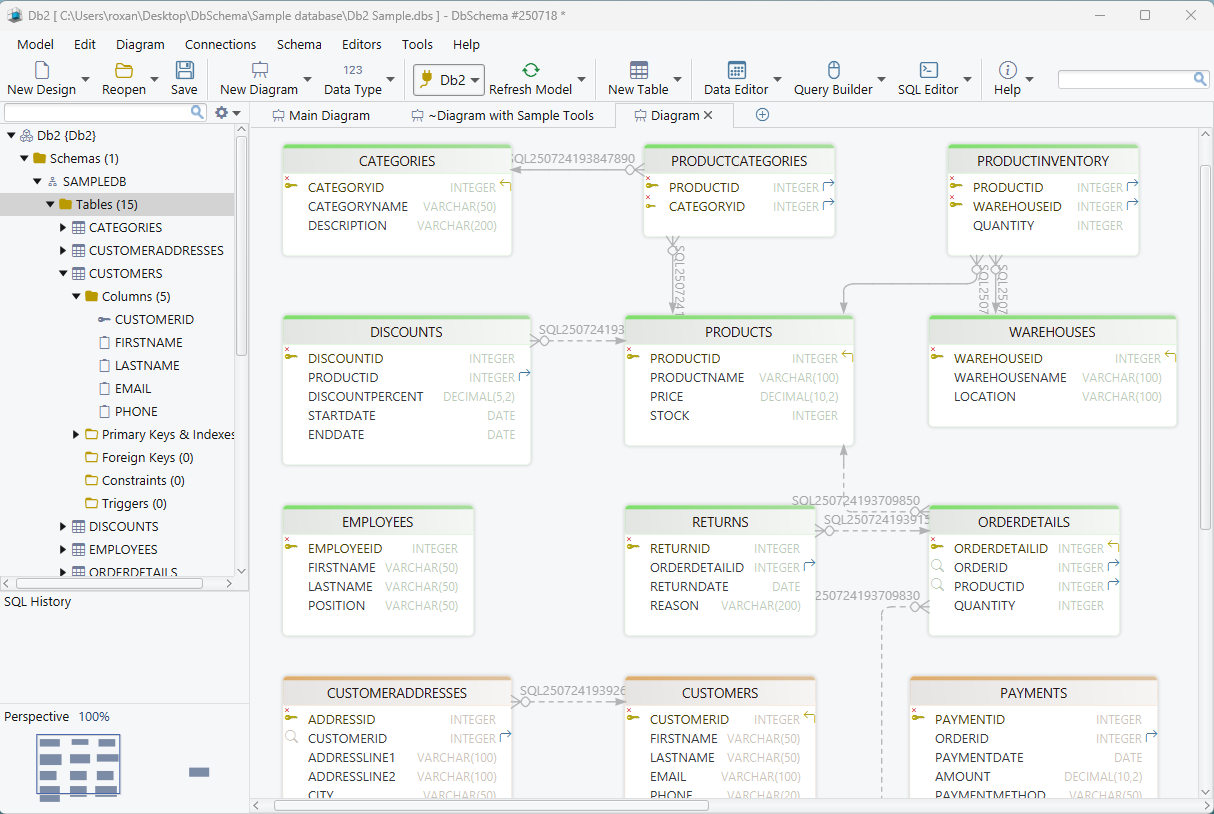
2. Explain Your Database with Interactive Docs
DbSchema can generate HTML5 documentation from your model, which is perfect for showing your database to others, even if they don’t have access.
The docs include:
- Table descriptions, column details, and keys
- Relationship diagrams that you can click and explore
- Custom notes and tags to organize information
- A full overview anyone can open in their browser
Great for training, audits, or just keeping your work organized.
3. Collaborate Using Git Version Control
DbSchema has built-in Git support, so your schema changes are tracked like any software project.
Why this matters:
- Keep a history of all changes
- Review the differences in schema compare
- Share safely with your team
- Try new ideas on separate branches
- Undo mistakes anytime
No more confusion about who changed what, or when.

4. Run Queries Visually or with SQL
DbSchema gives you two ways to explore your data: build queries visually or write them yourself in SQL.
What you can do:
- Use the Visual Query Builder: Drag tables onto the canvas, connect them, and apply filters without writing a single line of code
- Auto-generate SQL: The SQL updates automatically as you build - great for learning or validating
- Filter, Group, and Sort: Apply WHERE clauses, ORDER BY, GROUP BY, and aggregations using simple clicks
- Join Related Tables: Just link matching fields - DbSchema handles the join syntax for you
- Preview Query Results: See your data instantly, with live results shown at the bottom
- Write SQL Manually (if you want): Use the built-in editor with autocompletion and syntax highlights
- Save Queries for Later: Organize, label, and reuse your most helpful queries
It’s like using a spreadsheet, but for structured, relational data.
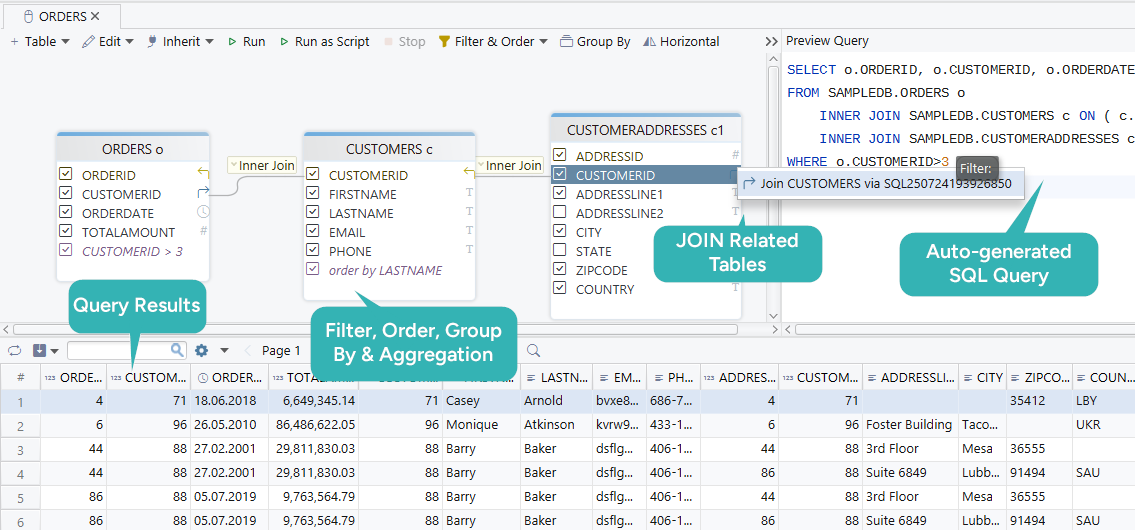
5. Sync Your Model with the Real Database
DbSchema keeps your design in sync with the actual Db2 database using its Schema Sync feature.
With it, you can:
- Compare your design with the live database
- See what’s new, missing, or changed
- Apply updates selectively
- Export SQL scripts for manual deployment
You stay in control, with no guesswork.
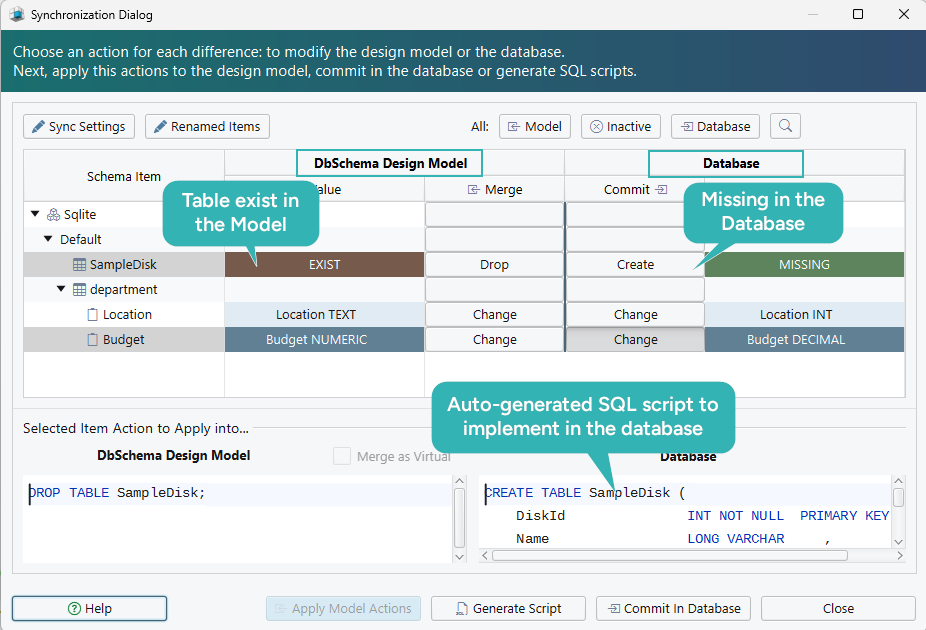
6. Edit Data Like a Spreadsheet
The Relational Data Explorer lets you view and modify Db2 data in a familiar tabular layout.
You can:
- Browse and edit data visually ( without
INSERT, UPDATE, DELETE) - Navigate between related records through foreign keys
- Filter and sort easily
- Export to CSV, XML, or JSON
It’s an intuitive way to work with real data, no need to write SELECT queries.
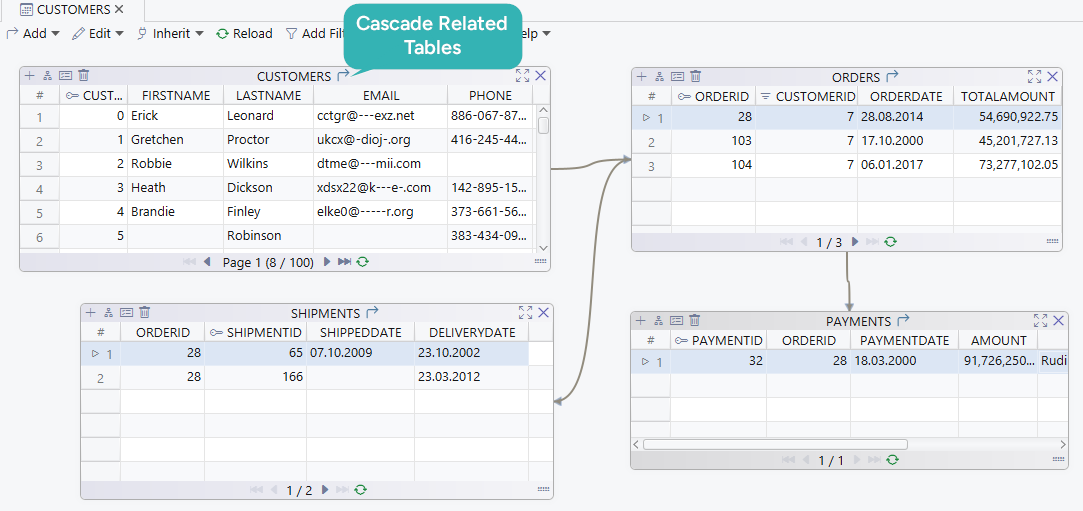
7. Create Sample Data for Testing
Need some realistic data for a test or demo? The Data Generator has you covered.
You can:
- Automatically fill your tables with fake names, dates, numbers, etc.
- Define rules for each field
- Simulate large data sets for testing apps
- Avoid the pain of manual inserts
It’s a great time-saver when developing or preparing presentations.
8. How to Connect DbSchema to Db2
Connecting to IBM Db2 is easy. Here’s how:
- Open DbSchema and select “Connect to Database”.
- Choose IBM Db2 from the list.
- If needed, download the JDBC driver automatically.
- Enter the hostname, port, database name, username, and password.
- Click Connect - and your schema will appear.
Read more about connection details on the official documentation page.
9. Wrap-Up Thoughts
Db2 database administration doesn’t have to be daunting or technical.
DbSchema keeps it a graphical, interactive process where you are in control - no matter if you are an expert or a beginner.
⬇️ Download DbSchema and start using Db2 a lot more.
